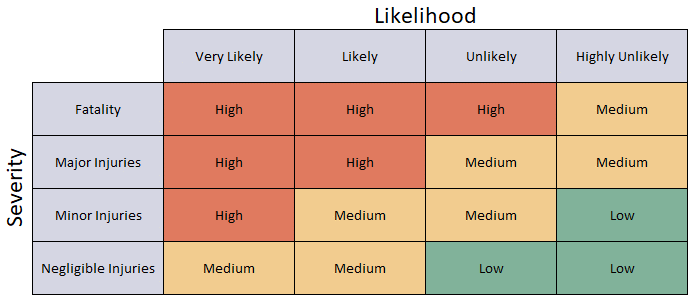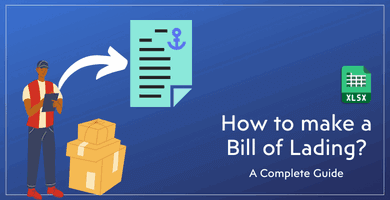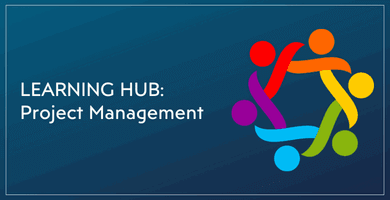
Vendor Risk Assessment: The Ultimate Guide
Vendor risk assessment are crucial for businesses to supply a wide range of products and services in today’s fast-paced business environment. If not properly managed, these vendors, nevertheless, can potentially represent serious hazards to enterprises. Vendor risk management (VRM), as a result, has emerged as a crucial part of any company’s risk management strategy.
Table of Content
- What is Vendor Risk Assessment?
- Why Do You Need a VRA?
- What are the types of vendor risk
- When to use Vendor Risk Assessment?
- What should be included in a vendor risk assessment?
- How to Perform Vendor Risk Assessment?
1. What is Vendor Risk Assessment (VRA)?
Businesses should regularly analyze vendor risk to gauge the risk that vendors pose over time. Afterward observing any changes and make sure they continue to fulfill the organization’s risk management standards. Finally, firms can assess vendor risk by using Request for Proposal (RFP) documents. Companies can assess the risk of potential vendors and choose those that adhere to their risk management needs by providing risk assessment criteria in the RFP.
In conclusion, any companies’ risk management strategy must include vendor risk management. Companies can safeguard themselves from potential risks and make sure that operations go smoothly by managing vendor risks appropriately. The VRA process, vendor risk evaluations, hazard management for suppliers, and RFPs are all crucial instruments that businesses may utilize to manage their vendor risks successfully. Hazard management for vendors is a crucial part of the business also, evaluate vendors risk is the total function of this work.

2. Why Do You Need a VRA?
Identifying and managing risks related to third-party vendors are all part of VRM. These dangers might range from financial instability and data breaches to operational disruptions and breaking rules. Companies can reduce their exposure to potential risks and guarantee the smooth operation of their operations by managing vendor risks. To ensure effective VRM, businesses should carry out a third-party vendor risk assessments (VRAs), which measure the level of risk connected with each vendor. hazard management for vendors is one of the most important works on these elements. In this process, suppliers that require an evaluation are identified, their level of risk is assessed, the amount of risk is determined, and a risk mitigation strategy is devised.
Risk reduction through vendor hazard management is crucial. This entails locating potential hazards that could affect a vendor’s operations and taking steps to reduce them. Setting up contingency plans for supply chain disruptions, and online threats is necessary. It’s crucial to keep in mind that when it comes to VRM, the risks connected to vendors can change based on the sector and the type of goods and services being offered. A company will have different risk considerations than another that just employs suppliers for manufacturing, for instance, if it uses vendors to hold sensitive customer data. That’s why hazard management for vendors is needed.
3. What are the ways to assess vendor risks?
There are 3 ways to evaluate vendors risk. We can count them as qualitative risk assessment quantitative risk assessment and semi-quantitative risk assessment.
a. Qualitative Risk Assessment
Qualitative risk assessment is for analyzing risk in the process production process and creating a pattern with the risk analysis. It is important, especially for hazard management for vendors. The people who do this should make vendor risk review all the time.

With this risk list from Someka’s Risk Assessment Excel Template, you can easily make a qualitative risk assessment of your vendors.
b. Quantitative Risk Assessment
Quantitative risk assessment is the analyzing system and production line for the likelihood of a problematic event and its frequency.
c. Semi-Quantitative Risk Assessment
Semi-quantitative risk assessment is merging both styles and makes other assessment types combine. It is crucial for hazard management for vendors too. So, evaluating the vendors risk is the main reason to do that.

– This chart analysis is created by Bowtie Diagram Excel Template in Someka portfolio –
4. When to use Vendor Risk Assessment (VRA)?
In brief, companies should think about hiring vendor risk management personnel in addition to deploying technology. These people can assist in handling the problems about vendor risk management and guarantee that their risk management strategy is thorough and up-to-date. It’s also crucial to remember that staff needs continuing training and education if vendor risk management is to be effective. Last but not least, businesses need to be ready to modify and develop their VRM plans if new risks arise or the business climate shifts. The organization’s risk management strategy may be kept effective and current in the face of changing threats and difficulties by routinely being reviewed and updated. Personells should do vendor risk reviews time to time. The people who do that should evaluate vendors risks.

– This image comes from Someka’s Vendor Comparison Template in Excel –
5. What should be included in a VRA?
Firstly, it’s crucial to keep in mind that when it comes to VRM, the risks connected to vendors can change based on the sector and the type of goods and services being offered. Secondly, A company will have different risk considerations than another that just employs suppliers, they uses vendors to hold sensitive customer data. So forth a thorough and current risk management framework is necessary to ensure that vendor risk management is efficient. This should include rules for choosing vendors and continuing monitoring, as well procedures for recognizing, evaluating, and reducing vendor risks. Building solid relationships with vendors is one efficient method for lowering vendor risks.
Overall, companies should make sure that their operations are safe and resistant to potential threats by being aware in recognizing and minimizing vendor risk review. The function of technology in managing vendor risks is another crucial component of VRM and its vendor risk reviews. These systems give access to each vendor’s risk profile, which can help them manage vendor risks more successfully.

– This is the dynamic risk matrix from Risk Assessment Google Sheets Template by Someka –
6. How to Perform Vendor Risk Assessment?
Nevertheless, a vital part of every companies’ risk management system is the assessment and control of vendor risk. Companies may create a strong and effective VRM program that helps them control vendor risks by technology, engaging people, providing training and education, and frequently analyzing and upgrading their VRM plans.
Due to the large number of third-party vendors offering services and goods, businesses must be careful in identifying and lowering the risks. So, the sheer volume of vendors that businesses must manage is one of the main problem in vendor risk management. Also, the companies might use hundreds or even thousands of vendors, each with a different risk profile.

Above report is an example of a output from risk assessment report for vendors.
Moreover, effective resource allocation and prioritization may become hard as a result. Lastly, people should make the assessment for vendor risk reviews daily or weekly.
In summary, companies should evaluate vendor risks before making procurements to protect their business against third-party hazards.
Recommended Readings:



